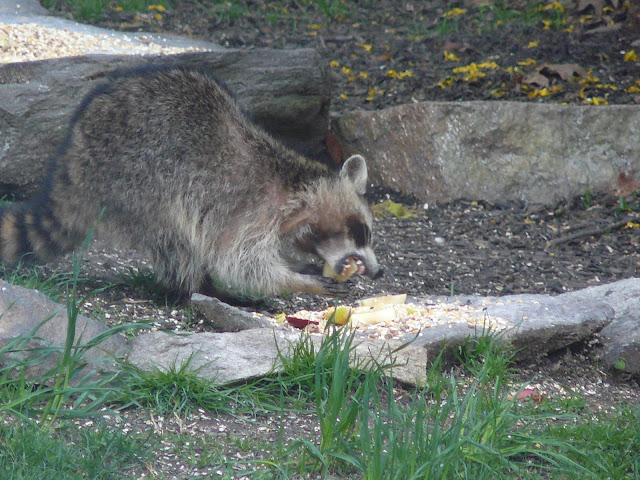Wednesday, April 28, 2010
Tuesday, April 27, 2010
Spring on Wildlife Lane
Young Fern
New growth on White Pine
Bleeding Heart (White)
Lamium "Purple Dragon"
Bleeding Heart (Red)
Lamium (Hermann's Pride/Variegated Yellow Archangel)
English Blue Bell
New Fern Beginning
Monday, April 5, 2010
Milk Snake
April 5th: I found this Milk Snake in our garage this evening. He is about 10-12 inches. I was able to get him onto a piece of wood and put him on a stone wall where he slithered away.
Mating generally occurs in May, with females depositing 3-24 eggs in June and July. Eggs are deposited under rocks, boards or other debris, in rotting vegetation, stumps or logs, or small mammal burrows, and usually hatch in August and September.
Woodlands, fields, rocky hillsides and borders of wetlands provide natural habitat for milk snakes. They are also commonly found around houses, barns and outbuildings. Small mammals are the preferred prey of milk snakes, who are able to enter burrows and consume young in their nests. Milk snakes routinely eat other snakes, and may also take birds and bird eggs, frogs, fish, earthworms, slugs and insects. Primarily nocturnal, milk snakes can be found during the day under rocks, logs, or other cover. Although they are not very aggressive, milk snakes will bite and spray musk if handled.
Mating generally occurs in May, with females depositing 3-24 eggs in June and July. Eggs are deposited under rocks, boards or other debris, in rotting vegetation, stumps or logs, or small mammal burrows, and usually hatch in August and September.
Woodlands, fields, rocky hillsides and borders of wetlands provide natural habitat for milk snakes. They are also commonly found around houses, barns and outbuildings. Small mammals are the preferred prey of milk snakes, who are able to enter burrows and consume young in their nests. Milk snakes routinely eat other snakes, and may also take birds and bird eggs, frogs, fish, earthworms, slugs and insects. Primarily nocturnal, milk snakes can be found during the day under rocks, logs, or other cover. Although they are not very aggressive, milk snakes will bite and spray musk if handled.
Subscribe to:
Comments (Atom)















